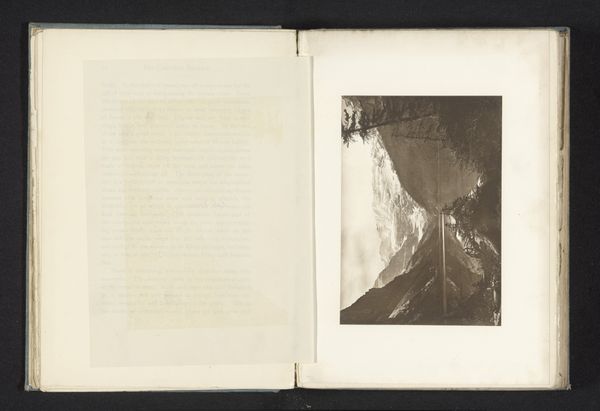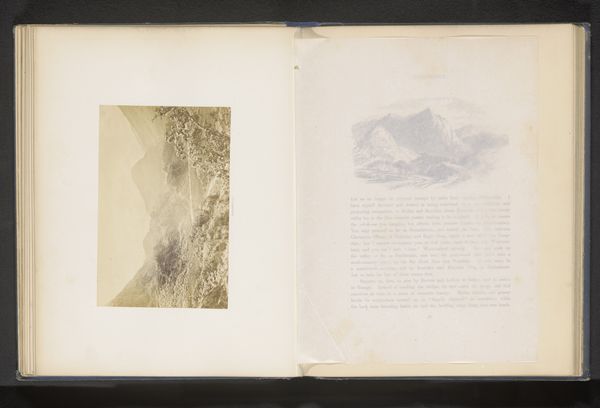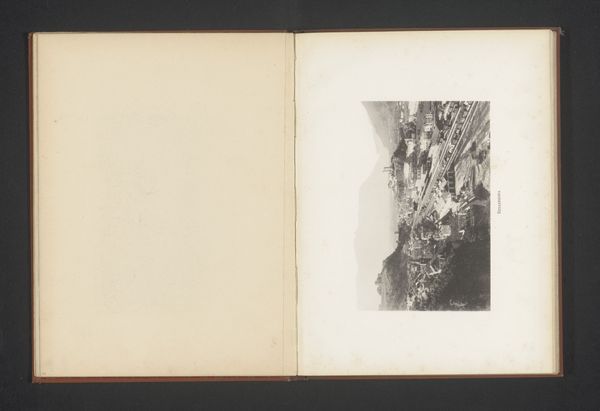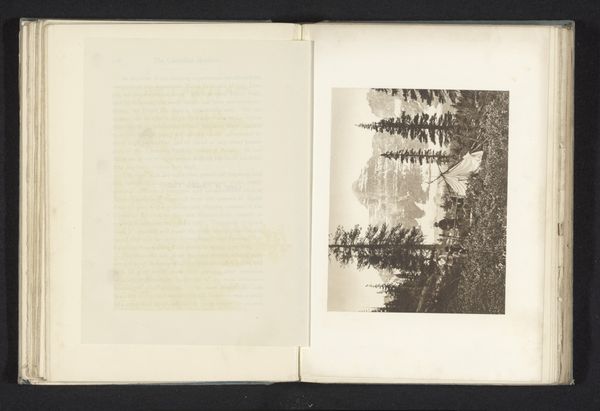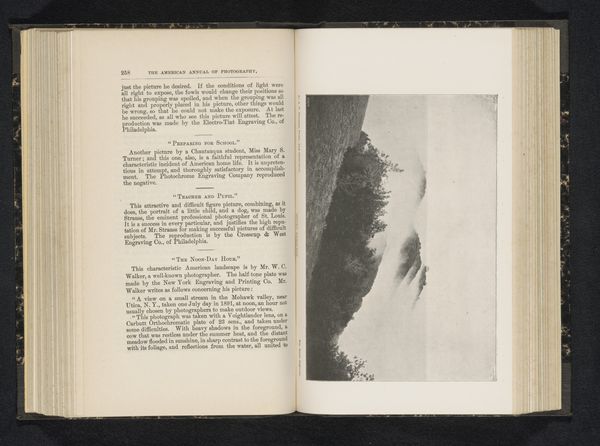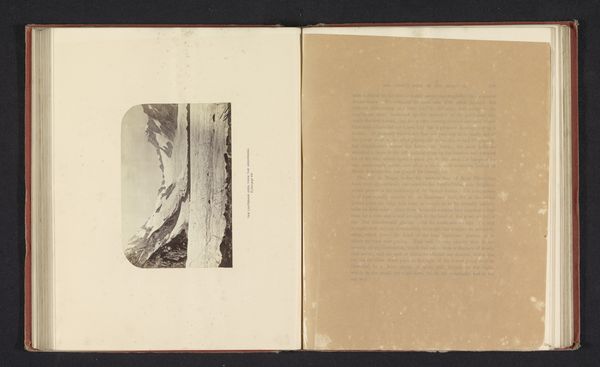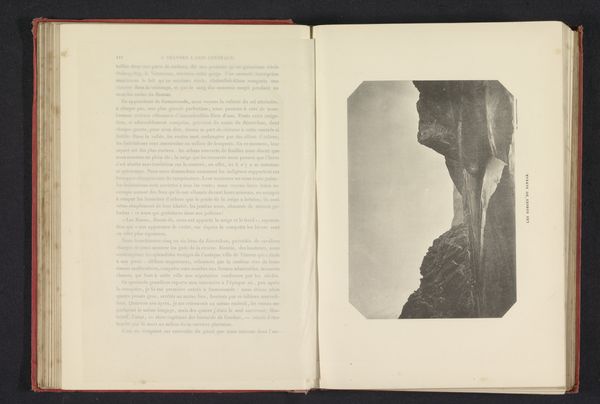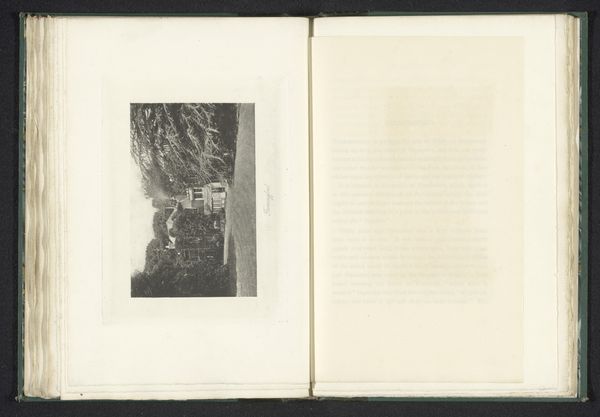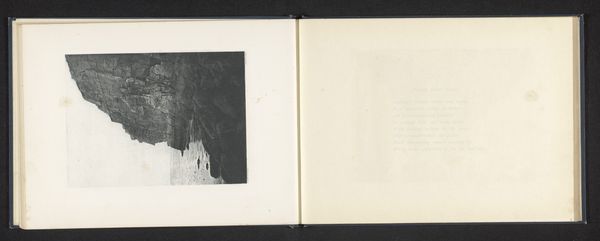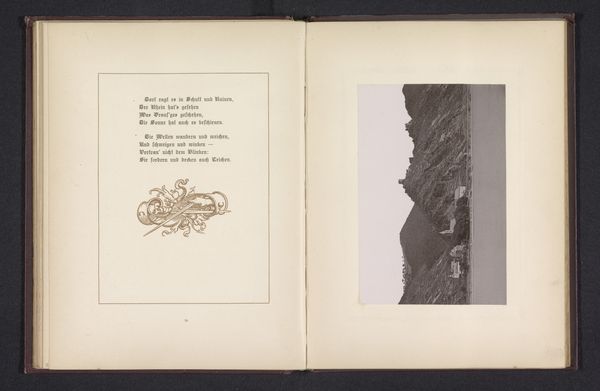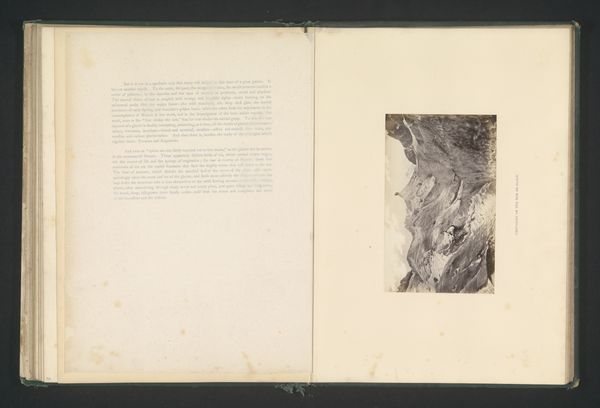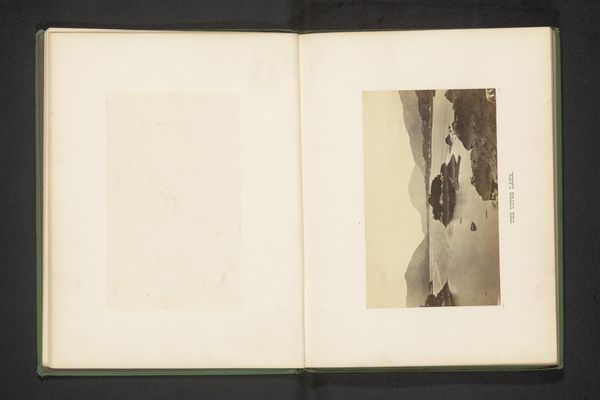
photography, gelatin-silver-print
#
landscape
#
photography
#
gelatin-silver-print
Dimensions: height 113 mm, width 161 mm
Copyright: Rijks Museum: Open Domain
Editor: Here we have Walter Dwight Wilcox’s “Gezicht op Paradise Valley,” a gelatin-silver print from before 1897. It's presented as a photograph within an open book, showing a striking, almost confrontational, close-up of a mountain. How do you interpret this work, thinking about its historical context? Curator: It's interesting to consider this image within the framework of late 19th-century landscape photography and its connection to exploration and colonialism. The image is cropped, offering us a seemingly objective viewpoint. It invites us to question who this "paradise" is for, and who gets to claim it. The very act of photographing and documenting this "untouched" landscape is inherently an act of appropriation. Editor: That’s a fascinating point. It does feel like a capture, a taming of the wild. Do you think the lack of any human presence is deliberate? Curator: Absolutely. Consider the prevailing ideologies of the time: the romantic ideal of the sublime wilderness, untouched by human hands, a blank canvas for projection and exploitation. What sociopolitical narratives are woven into the "untouched"? The romantic image often masks the violent removal of indigenous populations from these very landscapes. How does that affect our interpretation today? Editor: I hadn't considered it from that angle. Seeing it just as a beautiful landscape ignores a darker history. I guess paradise has a different meaning depending on who's looking at it, and from where. Curator: Exactly. By recognizing that the ‘objective’ beauty Wilcox presents has deeper connotations of societal hierarchy, class, and exclusion, it’s important to interrogate that romantic image. What have you discovered that will stick with you? Editor: Looking at art from this perspective makes you think about more than just what’s on the surface. Curator: Absolutely! This critical lens encourages us to always question not just what we see, but *how* and *why* we see it.
Comments
No comments
Be the first to comment and join the conversation on the ultimate creative platform.
